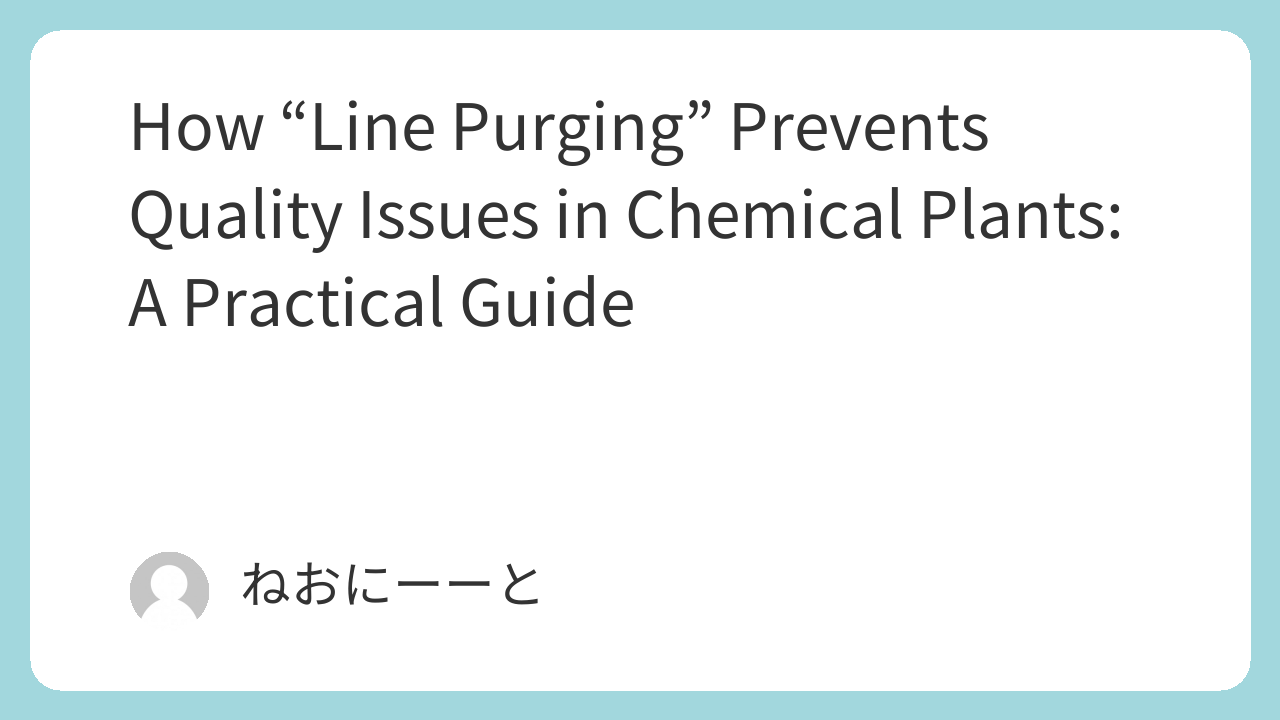You’ve probably seen social media posts warning against drinking tap water first thing in the morning. The reason? Water stagnates overnight in pipes, increasing the risk of bacterial growth and contamination.
The same principle applies in chemical plants. Fluids and powders that sit idle in piping or equipment can degrade, react, or become cross-contaminated. That’s why experienced engineers perform a procedure called “line purging” (also known as “pre-flush” or “initial draining”) to eliminate this residual material before critical operations.
This article explains how line purging is practically implemented during sampling, pump operations, and powder handling to maintain product quality.
1. Sampling: Why the First Draw Isn’t Reliable
During fluid sampling from pressure gauges, drain lines, or valves, the first portion of fluid collected may not represent the actual process conditions. Why? Because stagnant liquid often accumulates in dead zones of piping. This aged fluid may degrade due to exposure to air or time.
To avoid false readings and maintain data integrity, purging a certain volume before sampling is essential. The logic is the same as with urine testing—discard the initial portion, and sample the main flow.
In pharmaceutical facilities, this principle extends to tank top circulation systems to prevent water stagnation before use.
2. Pump Suction Lines: The Hidden Risk
Pump suction lines can also trap fluids—especially when transitioning between batches. Imagine a tank connected to a pump through piping: that short horizontal section before the pump often acts as a liquid trap.
For example, if a water batch is followed by an oil batch, leftover oil can remain in the line and contaminate the next water batch.
Key countermeasures include:
- Draining the line at the end of a batch
- Nitrogen purging (N₂ blowout) to remove residual liquids
- Redesigning piping layout to minimize retention zones
If the downstream process can tolerate slight mixing, purging may not be necessary. But where purity is critical, proactive purging is the standard.
3. Powder Handling: The Invisible Carryover
Powders behave similarly. During packaging from a vibrating sieve into drums, powder can remain in joints, piping bends, or previous-stage equipment like dryers or centrifuges.
Since powder flow isn’t always consistent, some level of mixing between batches is often unavoidable. However, smart sampling can mitigate risk. For instance:
- Avoid sampling from the bottom of the first drum, where residual material may accumulate
- Sample from the top of the first drum or later drums to reflect actual batch content
- After equipment cleaning (e.g., during shutdown maintenance), discard initial powder to reset baseline quality
✅ Conclusion
“Line purging” may seem like a small operational detail, but it plays a vital role in ensuring consistent product quality in chemical manufacturing.
Whether dealing with fluids or powders, stagnant material carries risk:
- Degradation
- Cross-contamination
- Inaccurate sampling data
By proactively identifying retention zones and flushing or discarding the initial flow, engineers can avoid subtle but costly quality issues.

Comments